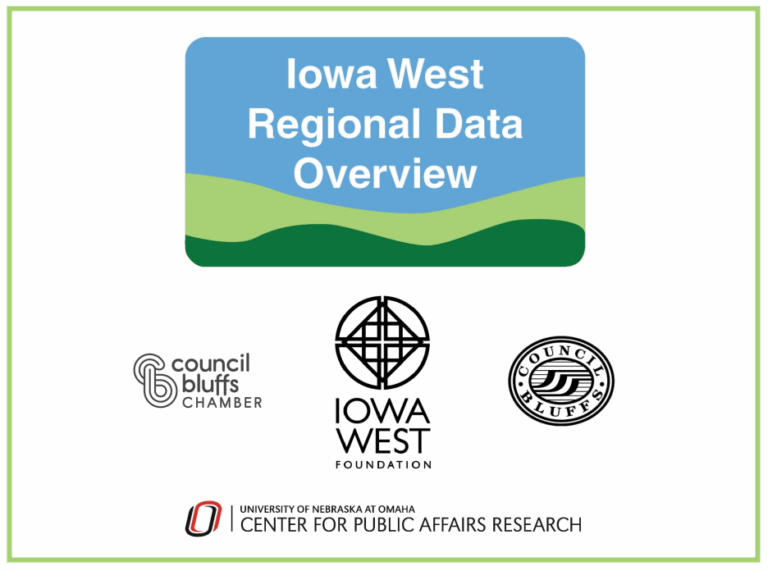Voices & Vision
A recap from Voices & Vision - October 29, 2025
Throughout 2024, the Council Bluffs Chamber and Iowa West Foundation partnered to hear from community members about their concerns that Council Bluffs isn’t growing and we aren’t attracting or keeping young families.
In 2025, we began gathering data and opinions to determine if the concern was widespread and based on reliable data. We had experts examine census data, launched the Council Bluffs Area Survey in the summer of 2025 asking for opinions about Council Bluffs’ quality of life, and talked to local residents to get their ideas.
All of these elements came together at Voices & Vision – a community luncheon where attendees answered questions in real-time about the research, survey results and community ideas.
Whether they live in CB, work in CB, or both, attendees agreed on three priorities.
- Council Bluffs wants to grow so the community can thrive – growth is essential to maintaining our community’s vitality.
- Our small-town vibe combined with access to big city options is our strongest asset, and we should make sure that young families and employees who work here but don’t live here yet know it’s a great place to live and raise a family.
- Council Bluffs is a great community – we need to focus on a positive community image that identifies our position as a unique asset in the greater Omaha metro.
In case you missed the event, please review the presentations and videos to learn about our community findings and insights from residents.



Survey Purpose and Context
Community surveys provide invaluable data to strengthen governance, identify local opportunities and challenges, and demonstrate a genuine commitment to responding to residents’ needs.1 Such efforts are often perceived by residents as authentic outreach that gives them an outlet to contribute to the collective well-being. For these reasons, this survey represents an important and exciting initiative for the Council Bluffs area.
This survey was designed to understand the opportunities and challenges facing the Council Bluffs area — specifically, why residents leave, why they stay, and how the community can build on its strengths to retain and attract people, particularly young professionals who are vital to the region’s future. This focus arose from a recent presentation of demographic, economic, and housing data that identified key trends. For instance, Pottawattamie County’s population has grown by just 0.5% over the past decade, a positive increase compared to many counties in the Iowa West region,
but well below the growth rate of Iowa overall and of neighboring Douglas and Sarpy counties
in Nebraska. Each year, more than 2,000 residents leave the county for other parts of the United States, most often young professionals (median age 34). Their outmigration reduces the tax base that supports quality-of-life initiatives and presents a challenge to long-term vitality, but the county’s steady growth, location, and engaged community also offer opportunities. This survey was designed to explore those opportunities in depth, providing insights into how the community can retain and attract residents and sustain long-term growth.
Participation and Representativeness
Notably, we received a strong response rate. Just under 2,000 people participated, an impressive number for a community of just over 30,000 households. This high level of participation reflects resident engagement, which bodes well for the future of this project and the community. We also found that 83% of respondents live in the Council Bluffs area and 74% work there. Taken together, just over 60% both live and work in the community, an important finding since thriving places are those where people can live, work, and play.
Survey respondents generally reflected the broader population of the Council Bluffs area, with only minor differences. Respondents were more likely to be women, report higher levels of education, and live in higher-income households. The age profile closely matched the overall population, with slight overrepresentation among those ages 35 to 64. Racial composition was also similar, though Black and Latino/a residents were underrepresented.
